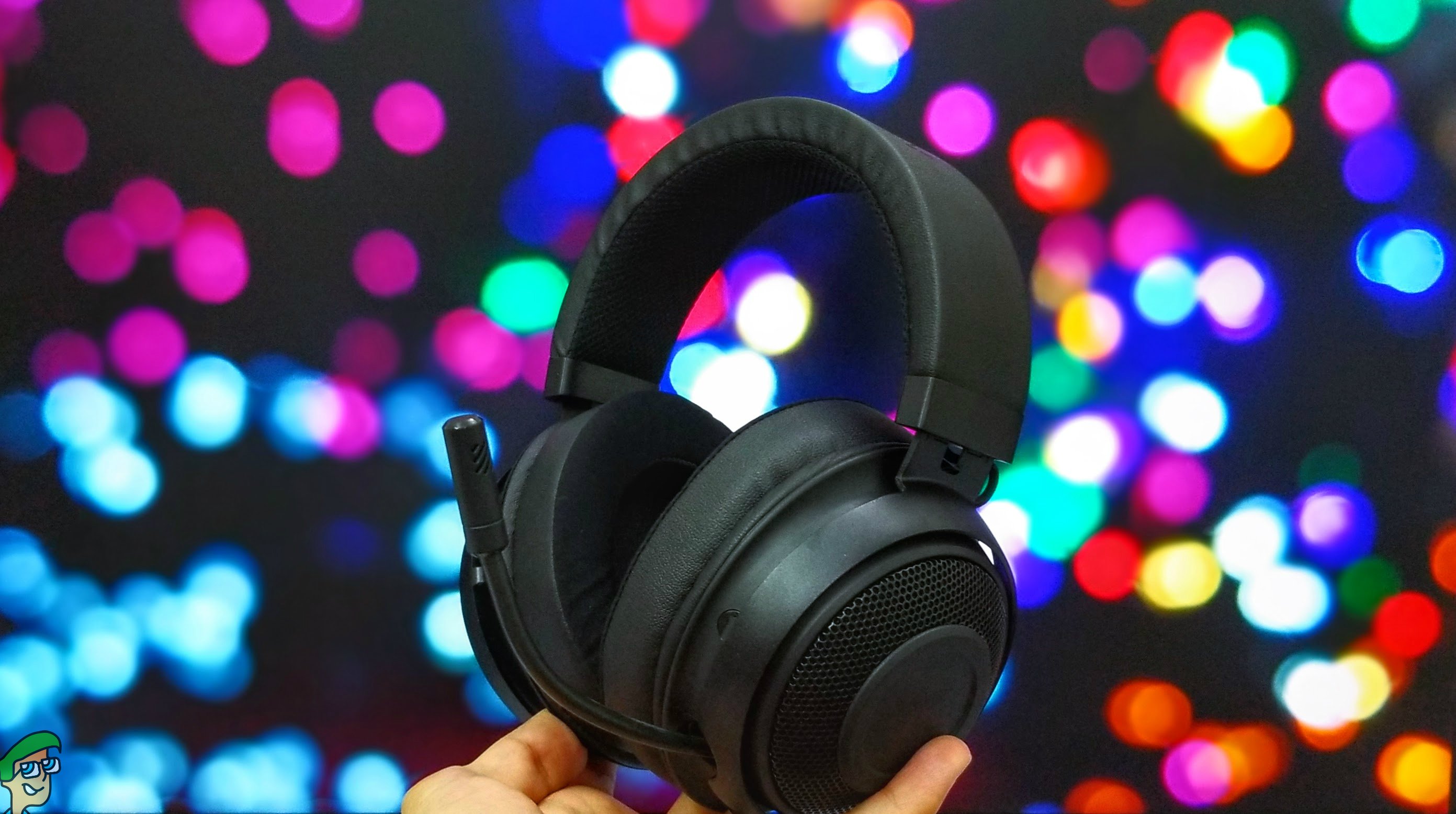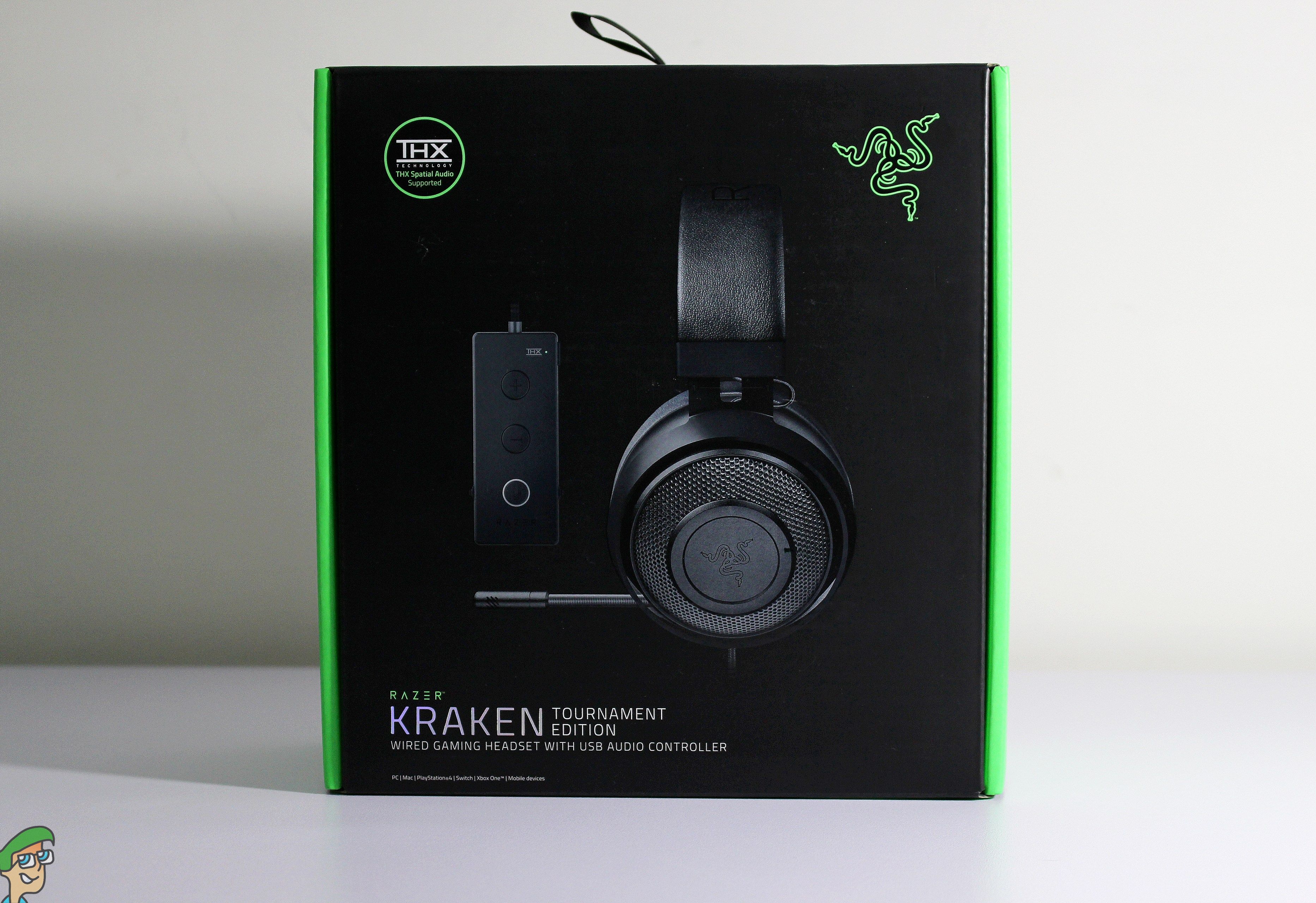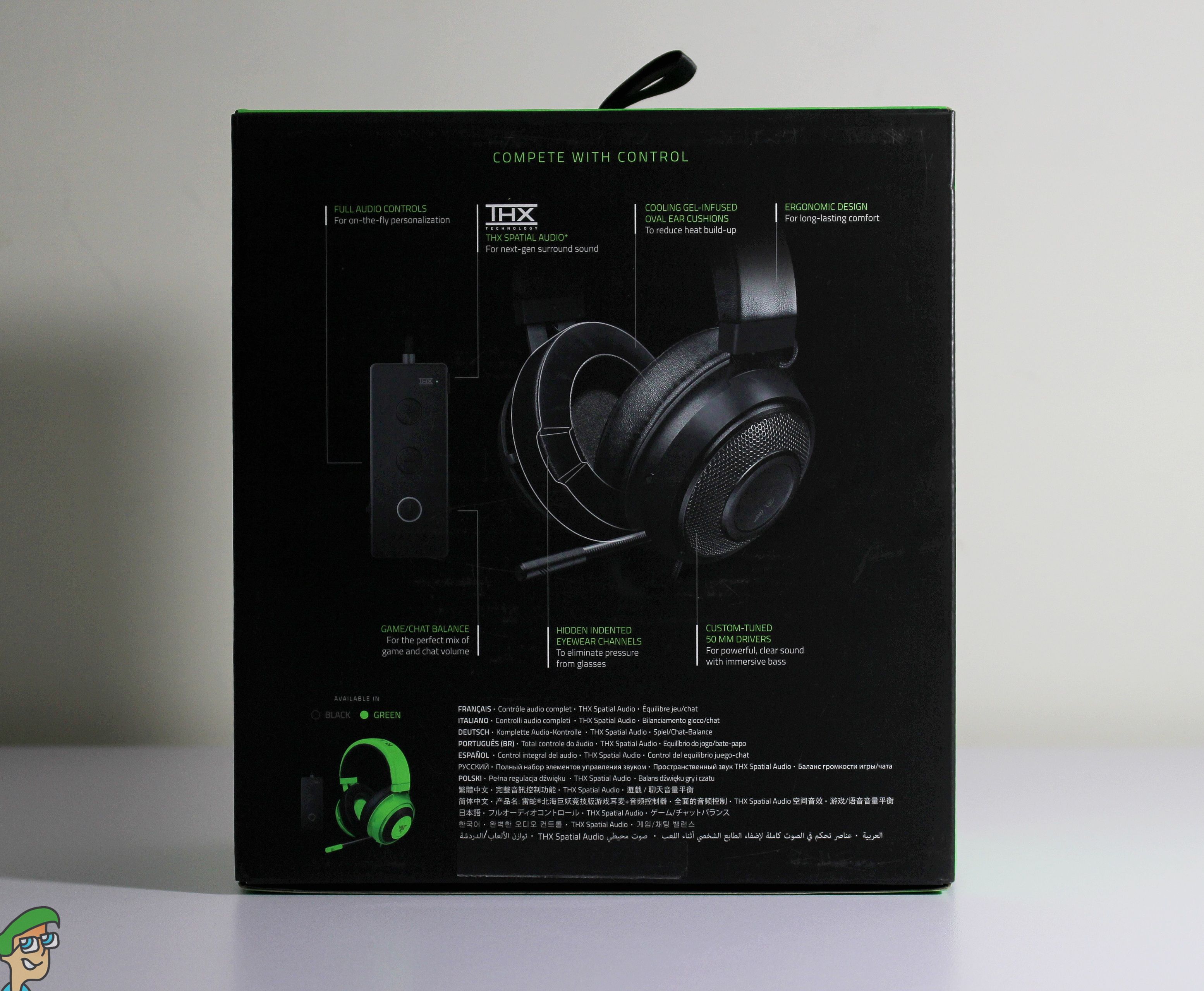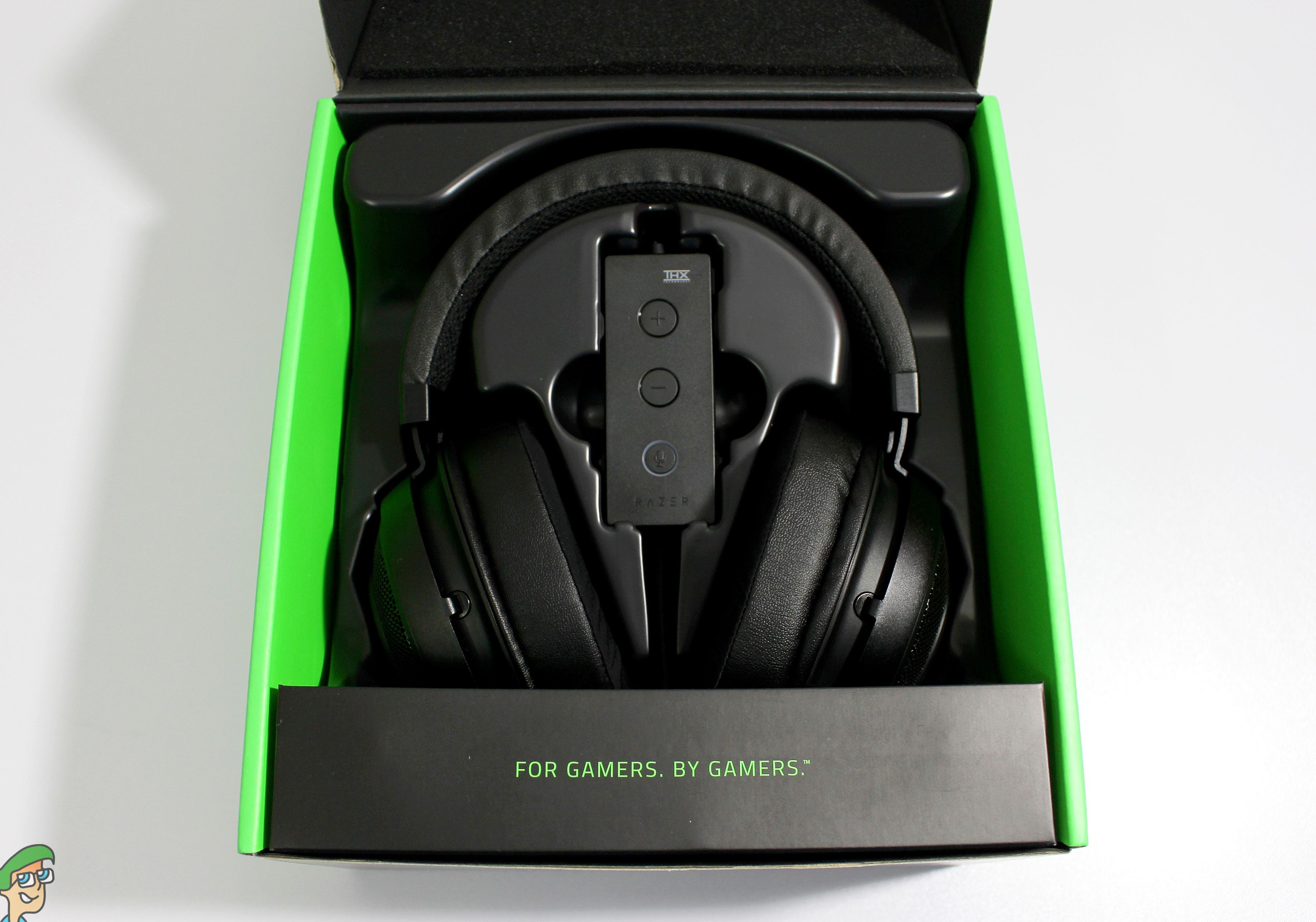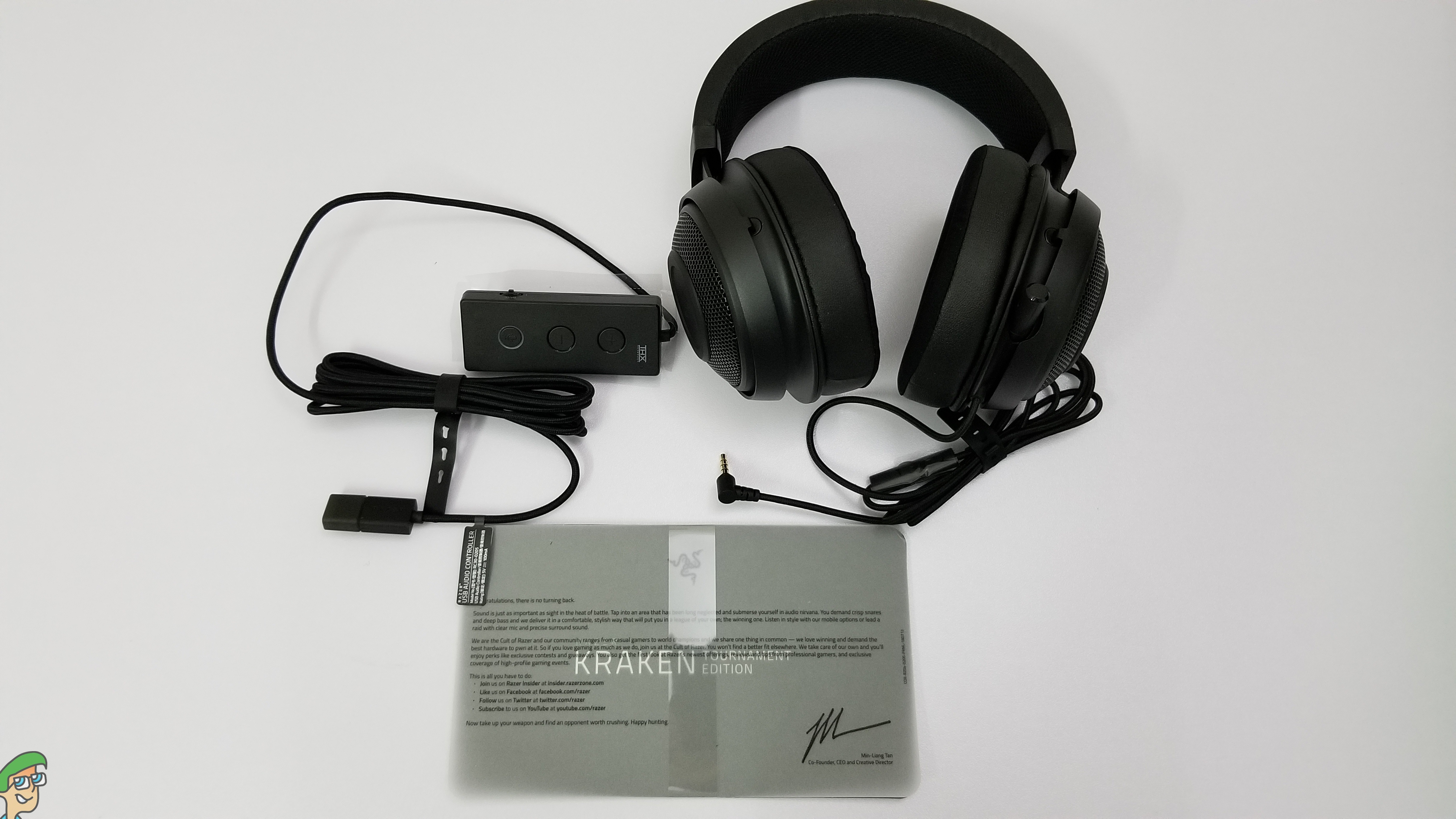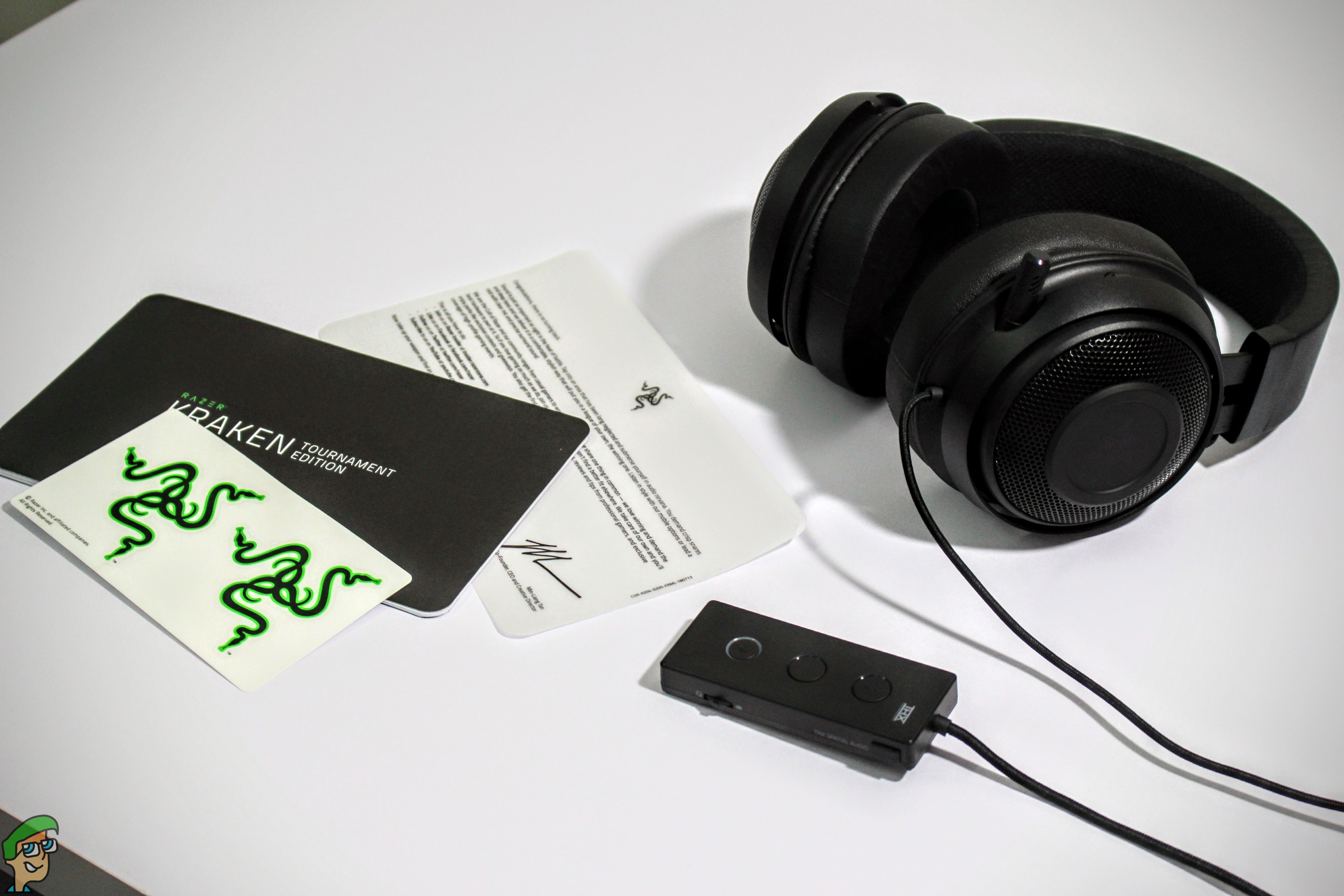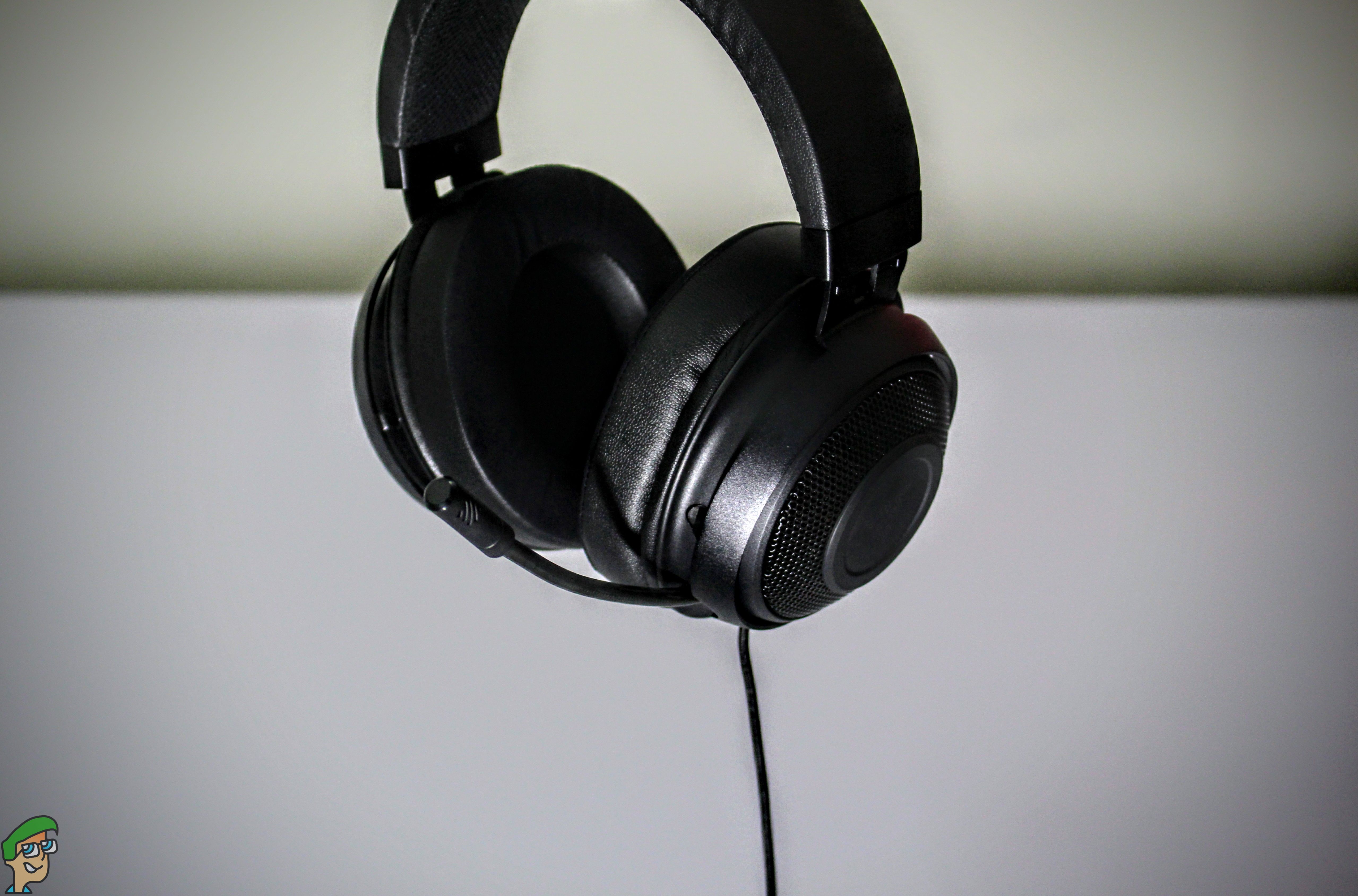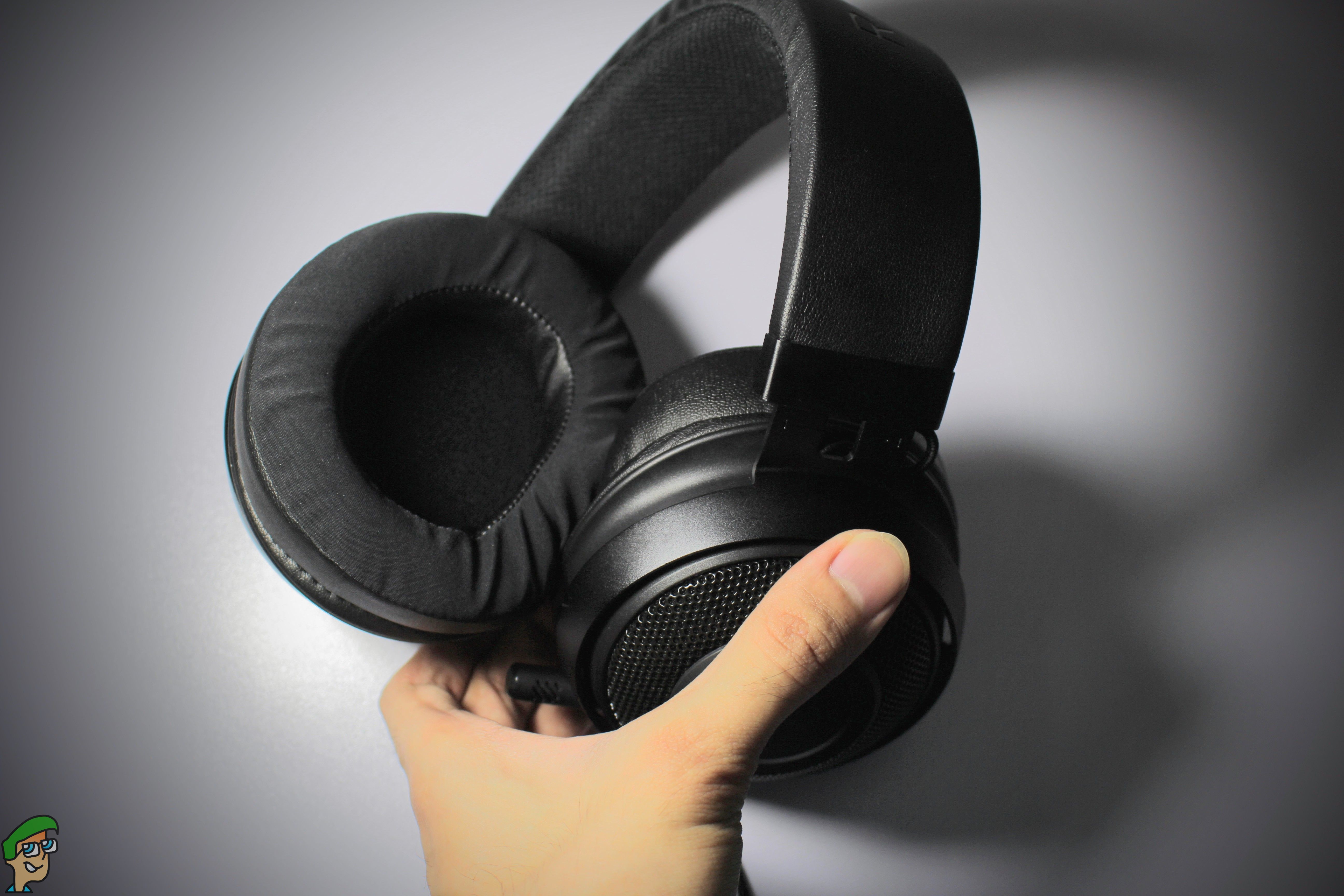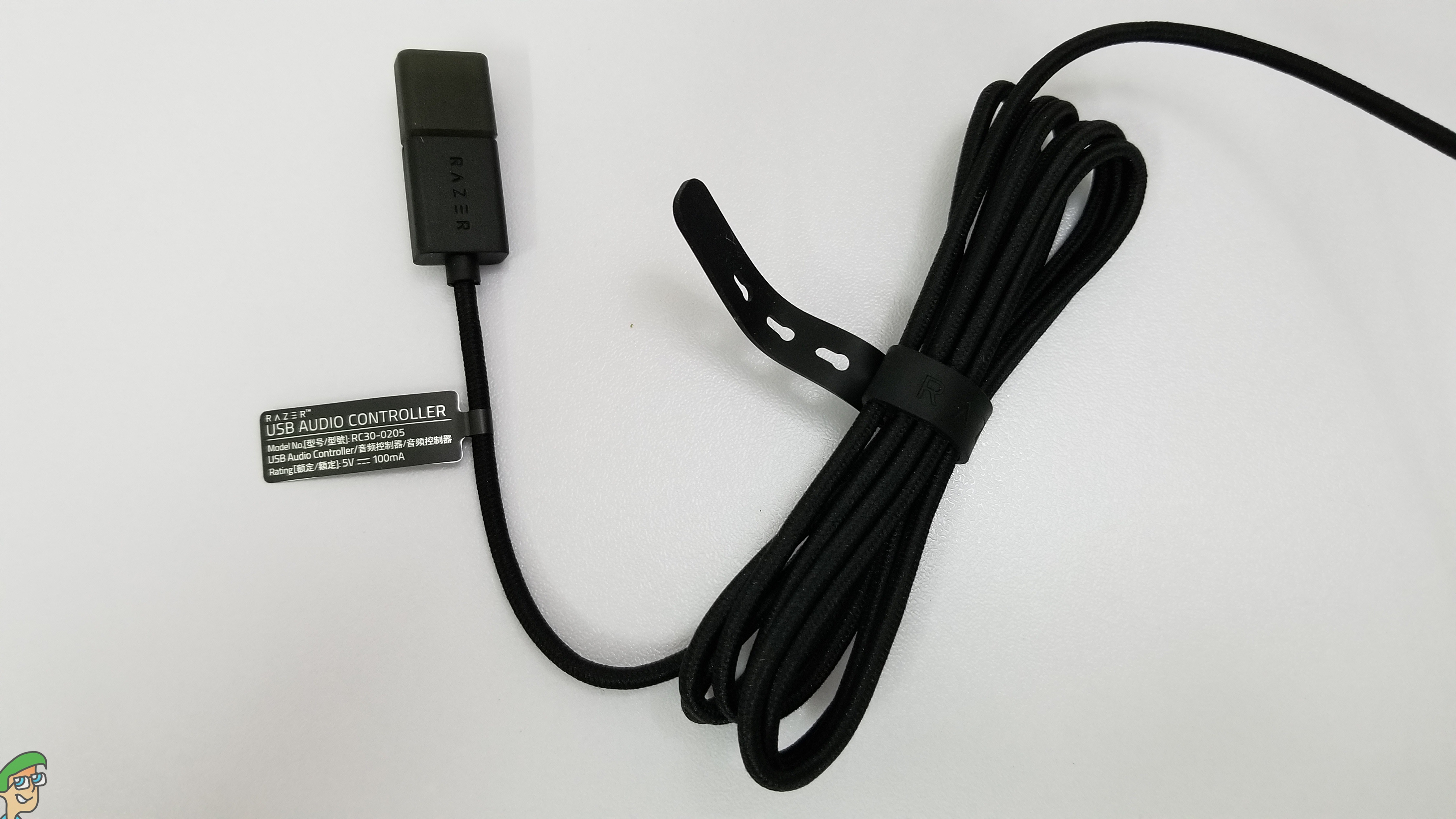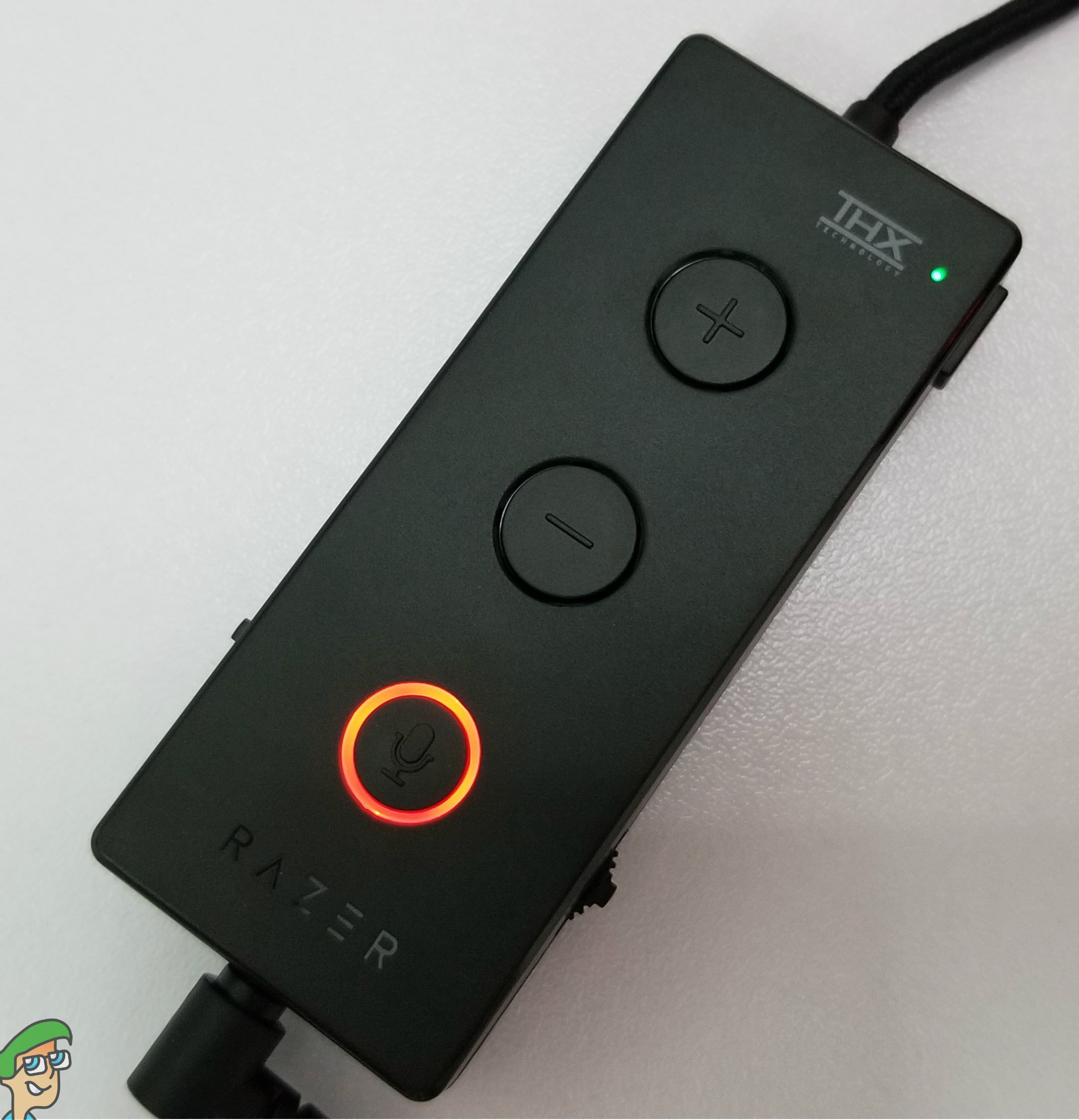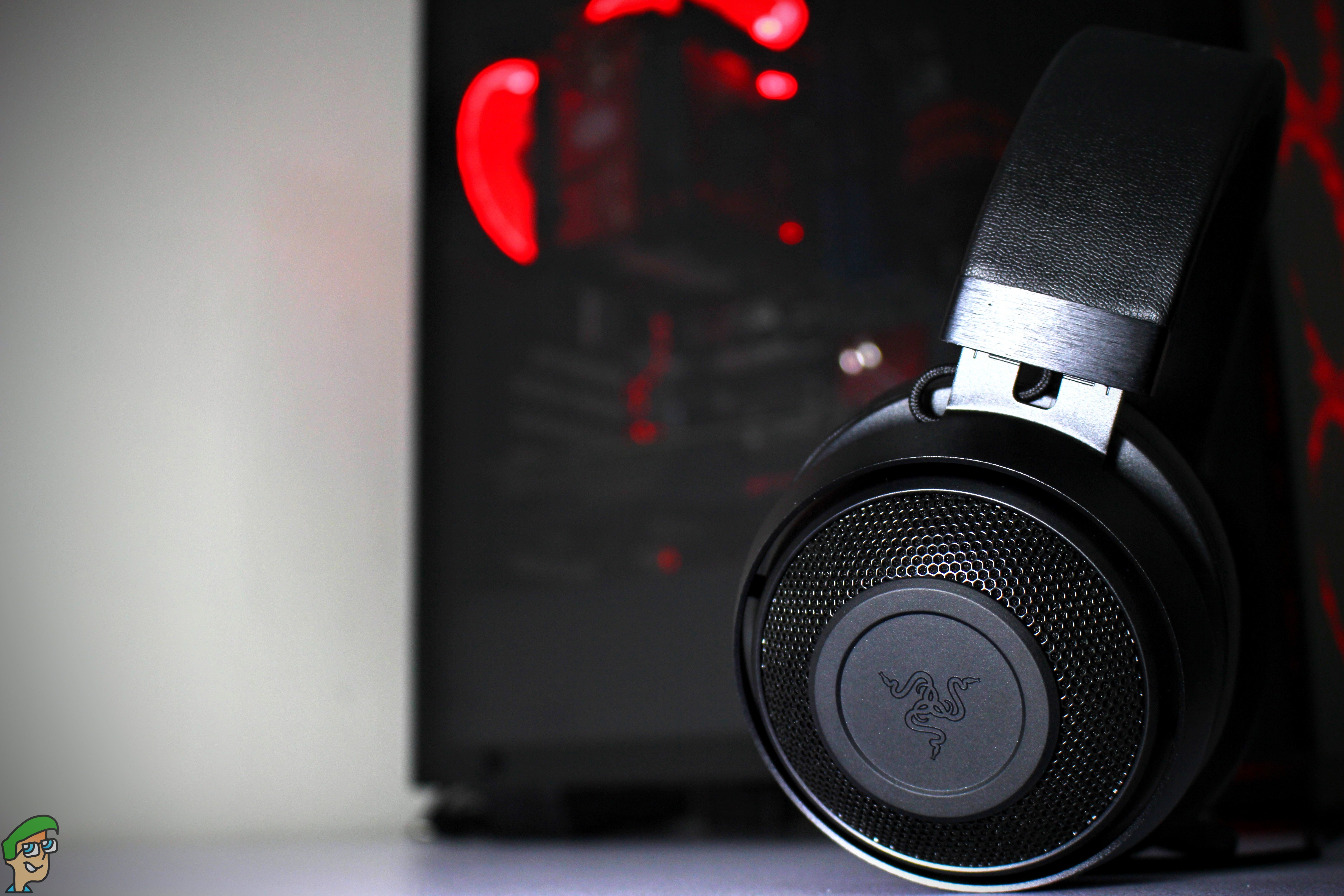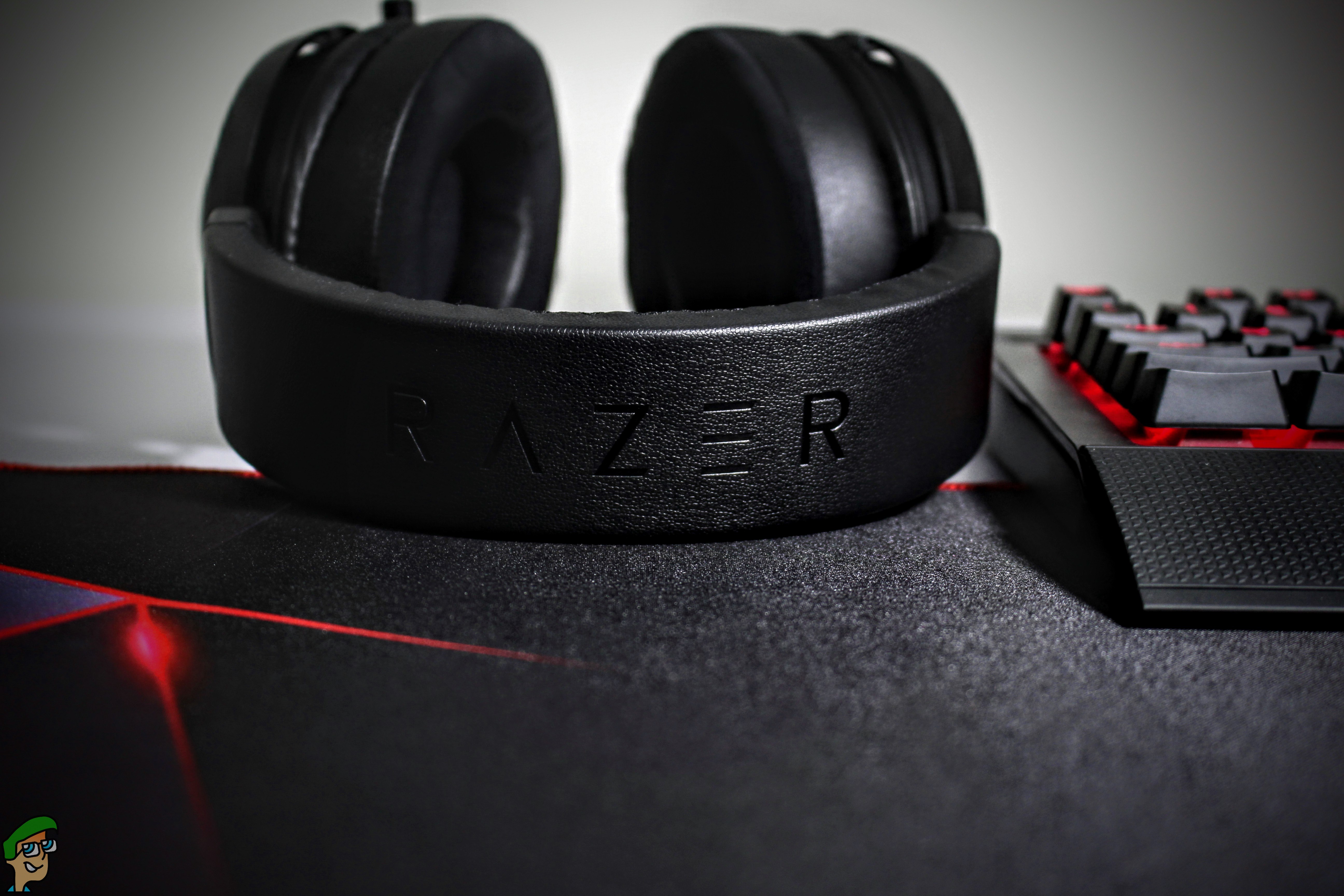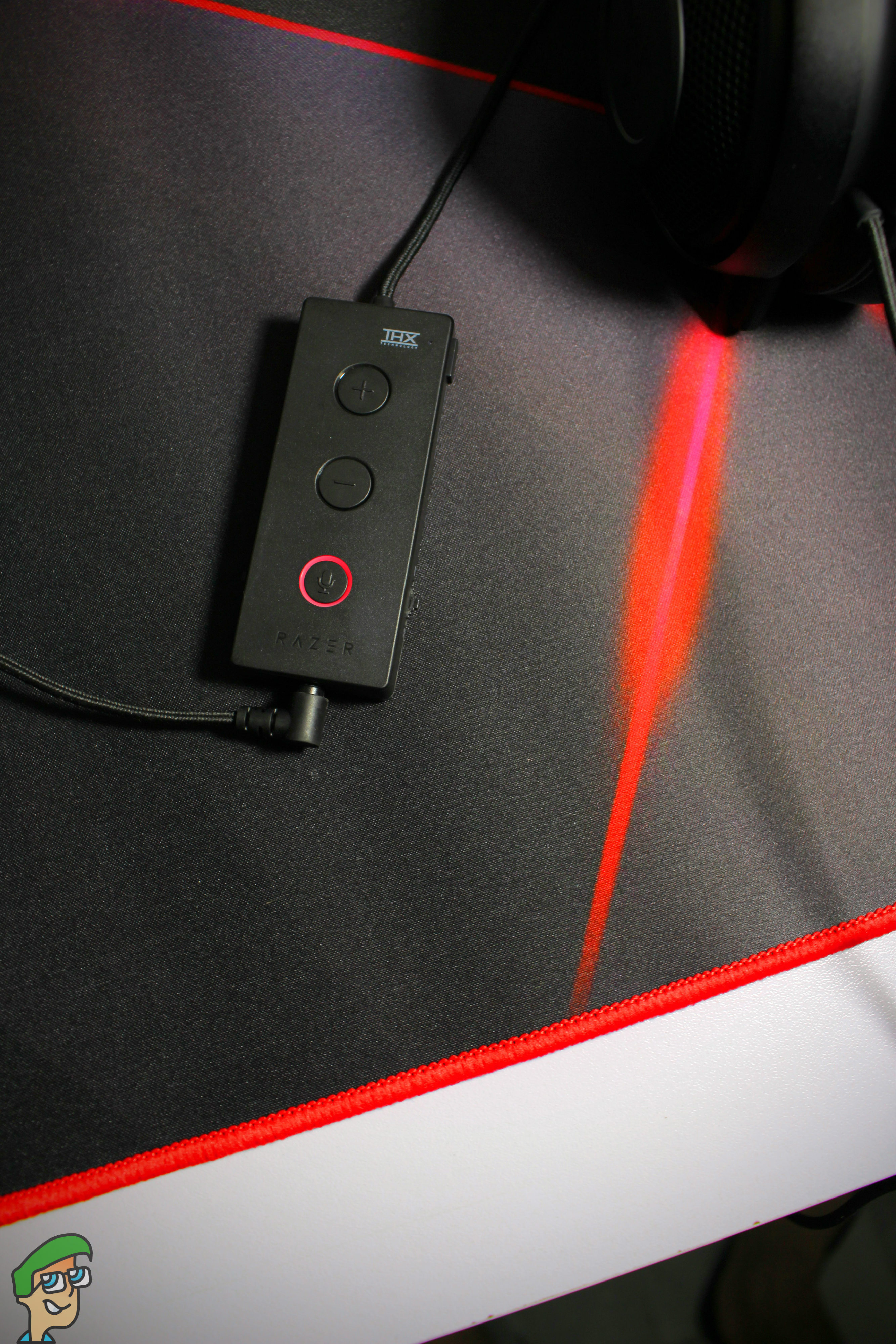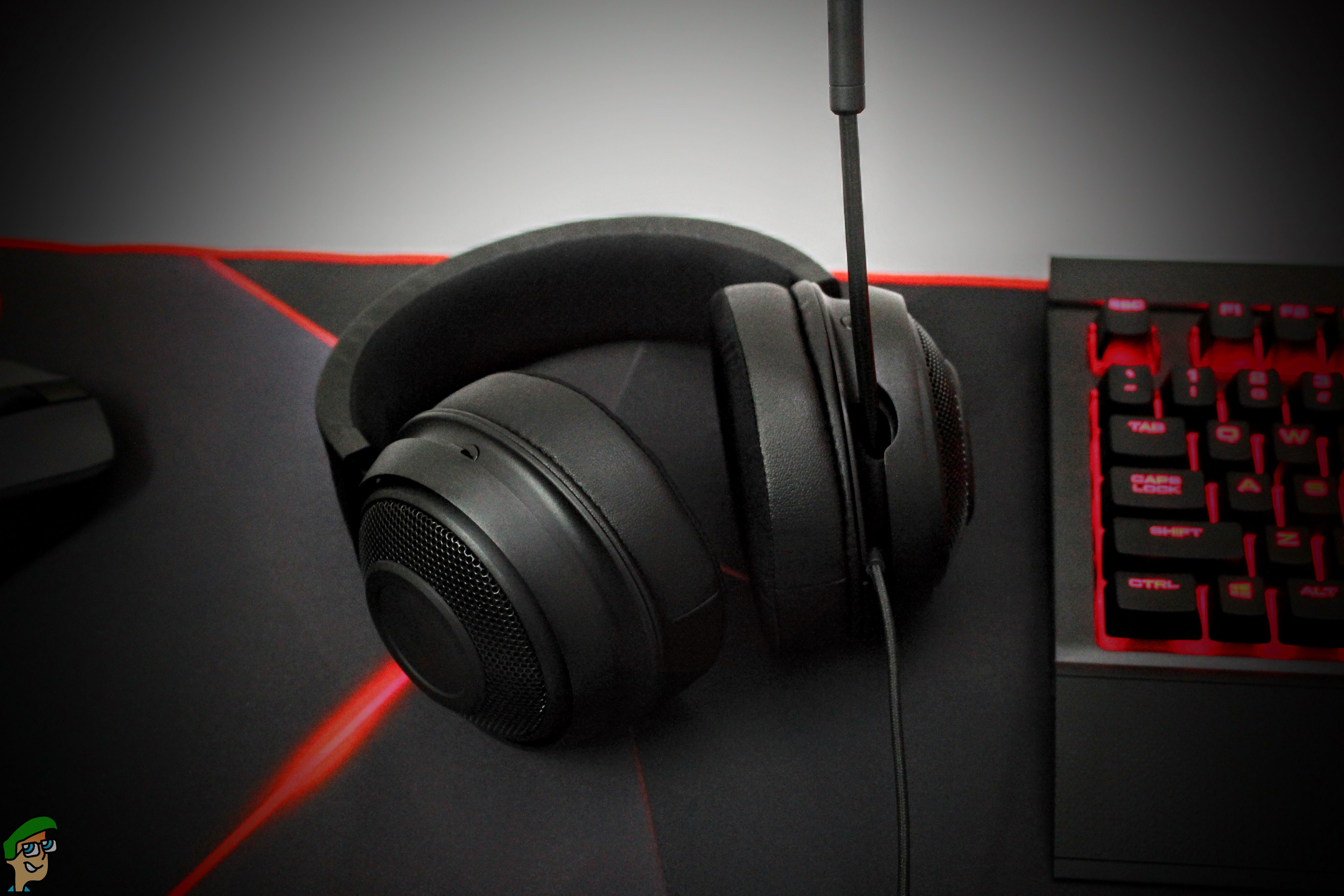Needless to say, marketing alone doesn’t make the product great until or unless it is manufactured with great workmanship. Taking an example of Hyper X, they manufacture nearly flawless gaming headphones but Razer products are still above Hyper X’ in terms of popularity. The same can be said for Corsair and Sennheiser. However, today we have a great looking pair of headphones on our hands, The Razer Kraken Tournament Edition. The Tournament edition is specifically targeted towards esports gamers with the THX Certified USB Amp. Since esports gamers are always on the go, this USB Amp is going to help gamers unify their audio experience over any PC. Surprisingly this headset indeed screams “Tournament” upon the first glimpse, but there are some noticeable flaws going on with the headset’s performance itself, we’ll talk about this in detail below. Without any further ado let’s dive straight into the review itself!
Unboxing
Unboxing a product from Razer has always been a blissful experience. The front side of the box contains everything you’d expect. The backside of the box shows off all of the highlighting features packed in the handy tournament weapon itself (The Kraken TE). I love Razer’s attention to detail in every corner of the box. Expect a frustration-free unpacking experience, even the seal is implemented in a way that doesn’t require any sharp equipment to be unsealed. You can go ahead and just peel off the seal with the colored arrow-hinge and feast your eyes with the Kraken sitting comfortably along with the THX Certified USB Amp/Controller. Below the headset itself, you get to see the infamous slogan of Razer “For gamers. By Gamers” which is another subtle and solid marketing technique, they are making you feel proud of your purchase here again. Anyways, I’ve unboxed many PC Peripherals in my life, but razer always makes its way above every other brand’s unboxing experience, period. The box content is as follows:
Razer Kraken HeadsetTHX Certified USB ControllerManual/Welcome Note and a set of Razer’s Logo stickers.
Design, Comfort & Closer Look
The design of the Razer Kraken Tournament Edition is not new but this closed-back design has been the most successful since the basic Razer V2s came out. Razer is taking the common “if it’s not broken don’t fix it” approach here which is appreciable. Though, the Razer logo on the earcups does not light up which makes sense because let’s be honest, are you really looking for aesthetics while you’re attending a gaming tournament as a professional player? I guess not. Upon further inspection, the overall build quality of the headset feels solid. The base frame of the headset is made out of aluminium which includes the headband that is covered with a cloth-based material in the bottom and a subtle leatherette at the top along with the stealthy logo of Razer. Though the ear cups are made out of plastic, the mesh and the outer shell around them are made out of aluminium which is a plus point in my opinion. So we can say that the headset is a blend of aluminium and plastic which is a nice touch considering the price tag of the headset. As we’d expect, the earcups are able to swivel for better adjustments. The overall comfort of the headset is great but not as close to Hyper X’s (Cloud series) offerings. In fact, the comfort level could be better than any headset I’ve tested if only the grip of the earcups was perfect enough to provide a perfect seal all over my ears. I found my ears not being covered fully from the bottom, hence making the headset’s seal feel a little bit wobbly. Due to this issue, I experienced sub-standard noise cancellation as the sound was leaking from the bottom because of the loose gripping of the earcups. However, I really liked the Cooling gel-infused ear cushions that are made out of a fusion of cloth and leatherette. They are thick, soft and exhibit a premium feel at first glance. The clothed area of the ear cushions helps to improve breathability so that intense long gaming periods aren’t going to be sweaty at all, this is where Razer wins when compared to Hyper X, as your ears tend to get sweaty on the Hyper X’ on the long run. The adjustable headband feels rock-solid, to be honest, and can move up to 6 steps according to your preference. Coming at the microphone side, again Razer has gone with the retractable/bendable which we all love. However, the mic is simple this time around, unlike the Kraken 7.1 V2, the mic doesn’t have any mute indicator or muting feature built onto it, rather everything is controlled through the in-line controls or the USB Controller. As we’d expect from Razer all wires are braided including the USB controller’s wire as well. Talking about wires, we do have an in-line volume rocker and mic mute controls in case if anyone wants to take them on an analog ride. I really appreciate this approach from Razer, usually, USB powered headphones don’t have analogue controls and the user is bound to connect the USB in order to take full control of the headphone. Taking a look at the USB controller/amp, it looks stealthy and simple at the same time. On the front, we have volume controls and a mic-mute button that lits up in red colour when the mic is muted. You get two type volume/mic controls (Analog & Digital) in total. Moving on to the right side of the USB controller we have Game/Chat Balance rocker and a THX Spatial Audio toggle. On the left side, there’s a bass boost rocker that helps in boosting the bass while ruining the whole audio experience as well, we’ll get to this later in the performance section below.
Performance – Gaming & Music
The performance of this headset is where it didn’t impress me at all. Don’t get me wrong here, it is great for the purpose it was made for, “Gaming”, but I expected more. Nevertheless here’s my take on the performance. Also, I’ll be using three basic audio terminologies below in order to explain the performance of the headphones. The terminologies are as follows:
Highs: refers to treble in audio usually “high frequency”, sounds of thin foreground instrumentals and sharp vocals.Mids: Mid refers to medium frequencies that are between highs and lows, sounds like background instruments and distant vocals.Lows: refers to bass and “low frequencies”, sounds of vibration or drums.
Gaming
The Kraken TE sounds just about amazing in games, no doubt. As the lows aren’t tight but rather muffled, this yields better enemy foot-step distinguishing frequencies in games like CS: GO and most competitive FPS titles. During Battlefield V testing, the headphone performed nicely, the sound of the gunshots, weapon reload, bomb blasts were clear and thrilling. Because of the warm tone of these headphones, I found their sound signature to be the most comfortable because of the smooth and underperforming highs. However, in other AAA titles like Metro Exodus and Sekiro: Shadows Die Twice, the performance was just about acceptable, as these games contain music, vocals and a lot of high-performing treble is needed from your audio source (headphones). To conclude these headphones are best at what they are designed for. Keeping tournaments in our mind, in esports titles like “CS: GO, Dota, LoL and Fortnite” the Kraken TE shined, though it suffered in producing quality audio where high-frequency details were needed (AAA Games).
Music
Music on this pair is just unacceptable, let me get this straight out of the way. And we can’t complain since these headphones weren’t made for audiophiles (like myself), these are targeted specifically towards gamers. I won’t be complaining about this all day but here are some details, Due to the highs being so underwhelming and dull the Kraken TE struggled in producing details of instruments and other audio factors that depend on the high frequencies.
Testing the THX Certified USB Controller
When I first opened the box and saw the controller resting it gave an amazing feeling, and my expectations got really high considering the fact that it is THX certified. The USB controller is handy in terms of controls of volume/mic mute. But, unfortunately, it doesn’t live up to any hype and in reality, it doesn’t amplify sound in any way. The general criterion of a USB controller is to amplify the sound as well as to yield the true potential of the headphone’s hardware in which Kraken TE’s amp failed. I tested the USB controller on the Corsair HS60 and the Monoprice Retro, the controller struggled in providing full power to a $30 pair of headphones from Monoprice. Upon further testing, I boosted up the bass and the controller started to leak and destroy low frequencies. Testing the HS60, the same happened. What I get from this is that the controller is poorly engineered and is just not what I expected it to be, again if it wasn’t THX certified, I wouldn’t have complained. Powering the Kraken with my motherboards onboard audio output (Realtek ALC1150), the Kraken sounded slightly superior, and this is where I started to see things in a better way. The real culprit might be the USB controller itself. With a little bit of EQ on Sound Blaster X-Fi MB3 software, I managed to make the Kraken to at least sound better than it was in the initial state, but still, it lacked detail in the mids especially when tested on my motherboard’s (Gigabyte Z97x) sound card.
Microphone
The microphone on the Kraken TE is impressive right off the bat. If you fire up a vanilla sound test without fiddling with anything the microphone performs surprisingly well considering the price tag of the headphone. Overall if you’re a streamer then I won’t recommend it, the overall sound signature of the mic is somewhat nasally, your voice might sound a little high-pitched. But, the noise cancellation is certainly better than Corsairs HS60′ and on par with the Hyper X Cloud 2′. Below is a mic test that can help you judge better.
Software
The USB controller can be configured through Razer Synapse, and the software is impressive but rather bulky in my opinion. Also, any changes you make are saved in the software itself, the USB controller doesn’t have any on-board memory to store anything. So the configuration is software-based, and this is a flaw. Since the headphones are targetted towards esports gamers, usually they don’t have time to download software and reconfigure it during on-going tournaments. So Razer lost their focus here, the software feature can’t be of any use to any gamer who’s on the go. However, there are some features like spatial audio calibration, mixer, sound normalization and voice clarity that are no good, you’re better off without these features. The headphone sounds better in its most natural flat state without any enhancements, this is good as the esports gamers won’t be needing those software enhancements anyway. The EQ feature is good and usable, can make the highs somewhat better which is the only reason to have the software.
Conclusion
To conclude, I think the headphone’s driver (speaker) itself is not engineered for music but specifically for esports gaming, which is what this pair was made for. I can testify that the Kraken TE’s did not disappoint me in gaming. So if the good sound in gaming is what you want, go ahead and buy these. But, If you want a decent pair of headphone that can do everything, then you might want to consider other options. Price at the time of review: US $74.50 / UK £75.12
Razer Huntsman Tournament Edition ReviewRazer Kraken X Lite Ultralight Gaming Headset ReviewFix: Razer Kraken Mic not WorkingRazer DeathAdder vs Razer Chroma Elite
